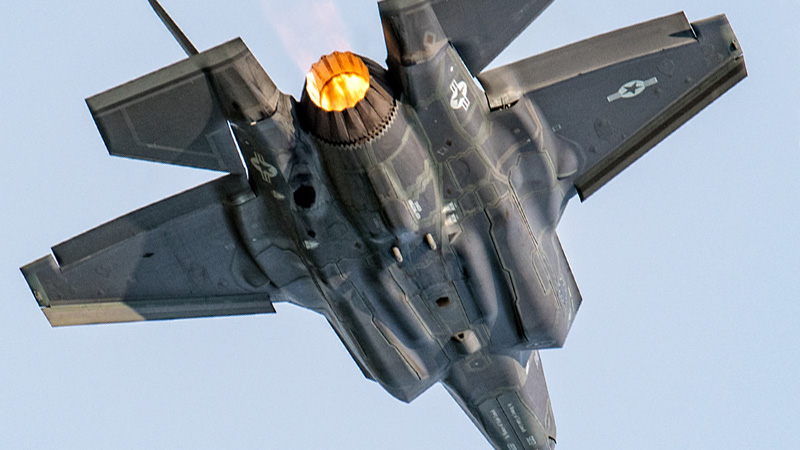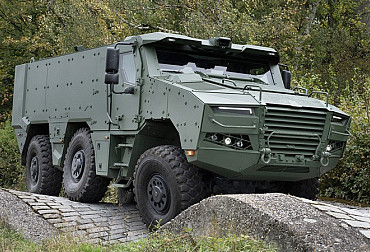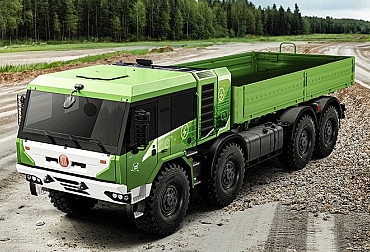Gripen as a possible future for the Czech Air Force - a solution in case of failure of the F-35 acquisition
Last week, the Czech Government decided to start negotiations with the US Government for the acquisition of 24 Lockheed Martin F-35A Lightning II 5th generation fighter aircraft. The Minister of Defence Jana Černochová (ODS) has to negotiate the terms of the contract until October 2023, and at least until the negotiations are completed, the acquisition of the F-35 is the only direction the Ministry of Defence wants to focus on, in line with the recommendation of the Army. Nevertheless, let's look at one of the options that may come back into play if the deal with the United States does not come to fruition for whatever reason – this option is to take possession of the existing Gripen C/Ds in the Czech Republic and upgrade them along the lines of what is being done in Hungary and Sweden, followed by a smooth transition to the latest Gripen E version.
Recently, there was a media report based on an interview by Swedish Ambassador Fredrik Jörgensen to CTK that a free transfer of ownership of the currently operating JAS-39 Gripen C/D aircraft may be an option and part of the solution to the Czech supersonic air force. Defence Minister Jana Černochová subsequently denied that the Czech government had received a similar offer from the Swedish government through official channels. It is then questionable whether and what bilateral negotiations between the Government of the Czech Republic and the Kingdom of Sweden on the possibility of Gripen aircraft to provide defence of Czech airspace have taken place.
The answer to the question of whether the Czech Air Force will go down the Swedish (Gripen) or American (F-35) route was publicly given on 20 July after a cabinet meeting, when the Minister of Defence was given a mandate by the Government to negotiate with the US Government (until October 2023) regarding the acquisition of F-35 aircraft. According to Jana Černochová, the Government made this decision based on the recommendation of the Army. Saab CEO Micael Johansson subsequently responded to the above by saying: "We would expect that as a long-term partner of the Czech Republic, with whom we have worked closely on the successful Gripen programme, Sweden will also be given the opportunity to present its current and future Gripen capabilities and that the Swedish Government will have a transparent opportunity to present its offer."
 Picture: On 20 July, after a cabinet meeting, the Minister of Defence was given a mandate by the Government to negotiate with the US Government (until October 2023) regarding the acquisition of F-35 aircraft. | Shutterstock
Picture: On 20 July, after a cabinet meeting, the Minister of Defence was given a mandate by the Government to negotiate with the US Government (until October 2023) regarding the acquisition of F-35 aircraft. | Shutterstock
In general terms, the pros and cons of both of the above options are well known. Let's take a closer look in the following lines at what the future of the Air Force's Gripen-based Gripen might look like if the F-35 acquisition cannot be implemented for some reason.
Two Gripen C/D upgrade projects are already underway in Sweden. Firstly, in January this year, an agreement was announced between the Hungarian Government and the Swedish Defence Materiel Administration (FMV) to upgrade the MS20 Block 2.2 of the existing Hungarian C/D Gripens, which will be carried out by the aircraft manufacturer, Saab. The upgrade, so designated, focuses primarily on enhancing the aircraft's combat and communications capabilities and expanding the range of weapons the aircraft can carry.
 Picture: Swedish Gripen C/D in MS20 Block 2.2 upgrade | Saab
Picture: Swedish Gripen C/D in MS20 Block 2.2 upgrade | Saab
The PS-05/A Mk 4 radar upgrade increases the range for tracking aerial targets. This radar has a 60-100% longer range compared to the existing Mk 3 version, depending on size and flight level. It features enhanced low-flying target detection capability, higher jamming resistance, and flexible support for a variety of missile types. It also brings the potential for further development in both air-to-air and air-to-ground modes, and enables the integration of a radar antenna with active electronically scanned array (AESA). In the area of communications, this includes an extension of Link16 (NATO Data link) capabilities and an upgrade to the latest NATO secure communications standard, along with enhanced identification capability through the latest NATO 5 Identification Friend or Foe (IFF) mode. Communications enhancements include improved ability to coordinate with ground forces with the support of the Digital CAS (Close Air Support) system, which reduces the time between order and execution and ensures proper target acquisition. Hand in hand with this is an enhanced target identification capability (NATO IFF Mode 5), providing secure identification of allied aircraft with enhanced data exchange including position and flight level.
The MS20 Block 2.2 upgrade will then allow the use of Meteor missiles for the destruction of targets beyond visual range (BVR), the latest variant of the AIM 120 C8 AMRAAM (also BVR), instead of Sidewinder missiles the possibility to use IRIS-T missiles, which are characterized by the ability to hit targets in 360°, including threats coming from behind the aircraft. The air-to-ground armament is represented by a modern GPS/laser-guided GBU-49 bomb capable of destroying moving and manoeuvring targets. In particular, the Meteor missiles from the European company MBDA, as also emphasised by representatives of the Swedish Air Force and Saab during the Future Air Force – New Generation Aircraft conference in Prague in May, increase the effectiveness of the Gripen in combat in a very significant way, thanks to their excellent performance with a range of 100 km against manoeuvring targets. Just to illustrate, Czech Gripen currently use two types of anti-aircraft missiles in addition to the 27 mm Mauser Bk-27 cannon: AIM-120 C5 AMRAAM medium range and AIM-9 Sidewinder short range.
Then in April, the same upgrade (MS20 Block 2.2) of the Swedish Air Force's Gripen C/D was announced, with the aim of improving capabilities to maintain the operational relevance of this fighter until at least 2035. "The Gripen C/D is the backbone of the Swedish Armed Forces today and will continue to be for years to come, so this is an important order to ensure the continued operation and operational relevance of the Gripen C/D," said Jonas Hjelm, Head of Aeronautics at Saab. According to recent statements from the Commander of the Swedish Air Force, Gen. Carl-Johan Edström, the SwAF can be expected to operate Gripen C/D aircraft in parallel to the newly inducted Gripen E/F version until 2040.
 Picture: Gripen C in service with the Czech, Hungarian and Swedish air forces | Saab
Picture: Gripen C in service with the Czech, Hungarian and Swedish air forces | Saab
If the Czech Ministry of Defence decides to continue using the existing fourteen Gripen C/D aircraft, or to expand the number of Gripen C/D aircraft, the aforementioned MS20 Block 2.2 modernisation package will come into consideration. The obvious advantage of such a hypothetical approach would be to gain a more comfortable position and time for a longer-term solution, at limited cost (assuming that the offer of a gratis transfer of the existing fourteen aircraft to Czech ownership is confirmed). At the same time, there would not be the risk that has been experienced in Slovakia – delays in the delivery of the purchased F-16s, along with maintenance problems with the existing MiG-29s due to the war in Ukraine (and their handover to the Ukrainian Air Force), have necessitated Czech assistance in providing protection of Slovak airspace, which the Czech Gripens will perform together with their Polish partners from September 2022. In recent days, the Minister of Defence Jana Černochová and the Government have also extended the stay of Czech airmen in the Baltic States (until the end of September 2022) by 2 months at the request of the Lithuanian side, where they are helping to secure the airspace over the Baltic countries with five aircraft as part of the so-called Air Policing.
In the case of the Czech Republic, the aircraft would be upgraded, which entered the arsenal of the Czech Air Force in 2004 and have been in service for almost two decades. Even so, in 2027, when the current lease contract expires, they will only be at 50% of their life cycle and their modernisation potential is still high. Moreover, a smooth transition to the Gripen E version would not compromise the Czech Air Force's ability to meet airspace protection requirements, as the retraining of technicians, pilots and possible adaptation of infrastructure can take place in a matter of weeks, unlike the transition to a completely new platform, which will also be very costly in the case of the US machines. If the Swedish Air Force is counting on C/D versions by 2035+, the Czech Republic would have enough time to prepare for the transition to the new generation of machines, including the Gripen E.
Until the Russian aggression against Ukraine in February, it was possible to think about supersonic aviation issues in the context of the existing tasks, which are mainly Air Policing. However, the intense symmetrical conflict taking place just hundreds of kilometres from the Czech border suggests that the numerically weaker side must rely on quality and technological superiority. Thus, a modern supersonic aircraft is definitely needed for our Air Force, but the overall logistics (e.g. timeliness of delivery), overall infrastructure requirements, cost of operation, etc. should be taken into account.





















